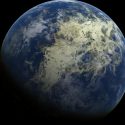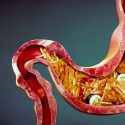You’d better mind your waste because it’s not piling up in landfills anymore. Today, we’re going to dump it all straight into the oceans. How much trash would that be? How soon would this change all marine life? Could this trash eventually displace our oceans entirely?
We, humans, produce a lot of waste in a year. 2.1 billion tons, to be precise. There’s household waste. And every second, we throw away 60 tons of household trash globally. As new technologies are developed, 50 million tons of electronic waste piles up every year. And there’s always good old plastic.
Most plastic materials could take centuries to degrade. And there’s already a massive pile of it floating around in the Great Pacific Garbage Patch. This is a collection of marine debris in the North Pacific Ocean mostly consisting of small pieces of plastic. And every year, 8.8 million tons of plastic end up here or in other parts of our oceans.
How much bigger would this Great Pacific Garbage Patch get if we dumped all of our trash in there?
If you grabbed all the waste humans produced in a year and rolled it up, you’d be looking at a giant ball that weighs as much as 5,500 Empire State Buildings. That’s a shocking amount of trash. And that’s a whopping 25,000 times more massive than the Great Pacific Garbage Patch. And this patch already covers a distance of 1.6 million square km (610,000 square mi).
To put it in perspective, with the trash we produce in one year, we could cover the surface of the planet (pause) 80 times. If all this waste accumulated in the oceans, it would ruin some marine life. If we completely covered our oceans in trash, no sunlight would be able to penetrate that shield. This would deplete our oxygen levels and affect the health of marine animals.
It would disturb the ocean’s invisible forest. These are the bacteria that are responsible for generating 10% of the oxygen you breathe. Losing them would have terrible ripple effects on ecosystems around the world. All this waste would also transport many kinds of chemical pollutants all over the world. Some of these toxic compounds would stay in the ocean for decades.
These are known as persistent, bioaccumulative and toxic compounds, commonly referred to as PBTs. They are dangerous for their ability to make their way up the food chain. Think about a little fish swimming in water with a high mercury concentration. That little fish gets eaten by a bigger fish just passing through.
That big fish is caught, and by consuming that big fish, you’d get more mercury in your body. And it wouldn’t only happen to you. Some marine animals like whales would pass on these toxins from generation to generation. This would weaken their immune systems and even affect their reproduction. Beyond the oceans being a truly ugly sight, there would be many human consequences to all this as well.
Chemicals and heavy metals from electronics waste would affect your central nervous and reproductive systems. You may already have microplastics inside your body. These are plastic particles that are smaller than 5 mm (0.2 in). But with the oceans covered in plastic, you’d consume even more of them.
At this point, there would be more trash in the sea than fish. You’d see many species go extinct. Maybe you’d even go to your local seafood market to find they don’t sell any fish. Only jellyfish. Um, I don’t know if I want to try that. Hopefully, you’d pull the plug on a project like this. Our waste management has some deeply rooted problems that wouldn’t be solved by dumping more trash into the ocean.
Sources
- “World Waste Facts”. 2021. theworldcounts.com.
- “Empire State Building Fact Sheet”. 2021. esbnyc.com.
- “2.6 Trillion Pounds Of Garbage: Where Does The World’s Trash Go?”. Derek Thompson. 2012. theatlantic.com.
- “Waste From Households”. 2021. theworldcounts.com.
- “The Effects Of Ocean Dumping”. Kevin Hinton. 2011. environment911.org.



























